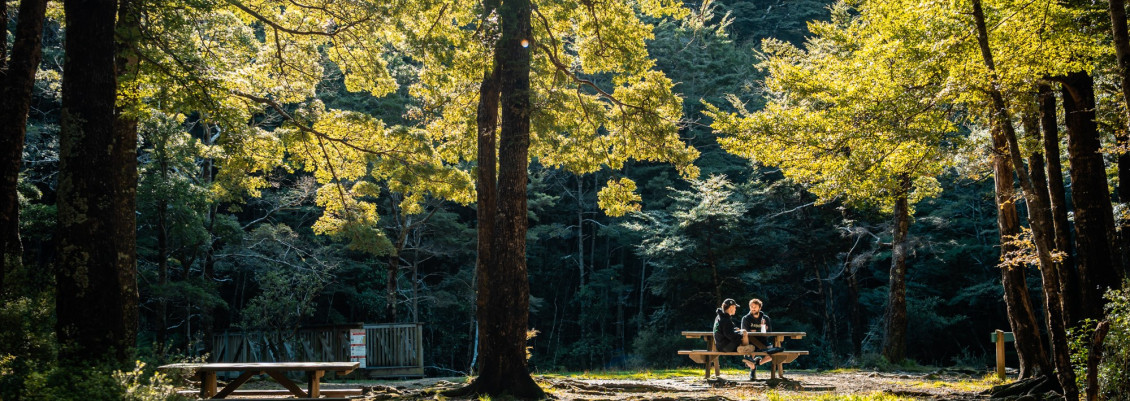
The Butterfly Creek Picnic Area in the Northern Forest, East Harbour Regional Park, faces an issue with its historic beech trees. Due to foot traffic over many years, root damage has occurred.
What’s happening?
A tree report by Wilding Wood Management identified that beech trees in the Butterfly Creek picnic area are under stress, likely caused by soil compaction from foot traffic. This compaction has led to low soil aeration, poor soil conditions, and limited water penetration. These factors have contributed to the death and decline of tree roots, making the trees more susceptible to fungi like Laetiporus portentosus and general dieback.
Over a century of sustained foot traffic has caused root damage, resulting in the death of beech trees near the picnic area. Some of these trees may pose a safety risk due to their proximity to picnic tables and the bridge.
What are we doing?
 To prioritise public safety, we remove all dead trees at risk of falling from the picnic area. We also prune and manage trees which show potential for recovery.
To prioritise public safety, we remove all dead trees at risk of falling from the picnic area. We also prune and manage trees which show potential for recovery.
We are planning the best course of action to protect the environment and the remaining trees while still allowing recreational use of the area.
Track closures may be in place while tree work is carried out. Please check the East Harbour Regional Park notices for updates.
What can you do to help?
Greater Wellington's goal is to preserve Butterfly Creek, ensuring it remains a safe and ecologically vibrant destination for future generations. Here's how you can help:
- Stay within the picnic table area.
- Avoid stepping on live tree roots.
- Wilderness camp at least 500m from the picnic area.
Get in touch
- Phone:
- 0800 496 734
- Email:
- info@gw.govt.nz
